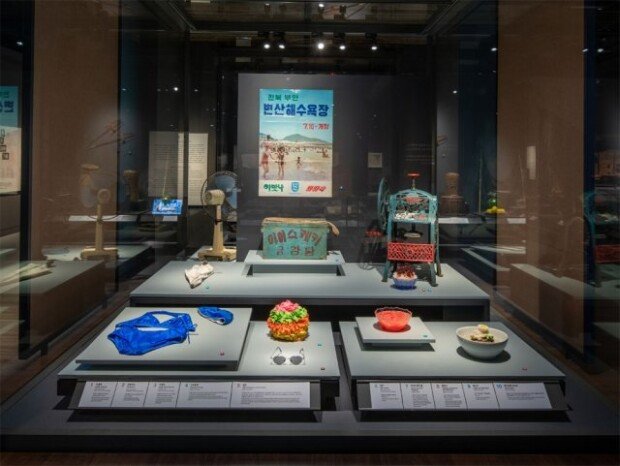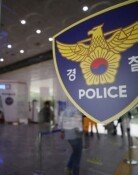Folk museum holds a ‘Newtro’ exhibition for Koreans
Folk museum holds a ‘Newtro’ exhibition for Koreans
Posted March. 30, 2021 07:31,
Updated March. 30, 2021 07:31

On March 20, the National Folk Museum of Korea opened a standing exhibition themed around “A Year of Koreans.” The previous exhibition “Daily Lives of Koreans”, which presented the seasonal landscape of Koreans, has been remodeled for about 10 months from May last year. Unlike the previous show, which was built around 24 sub-periods of agriculture, the new exhibition is newly themed around seasonal customs.
Catching the eye is the collection of “Newtro” items, a newly coined word combining “new” and “retro”. The daily lives of the 20th century have been reflected in earnest. The old coke bottles and palettes are showcased for the Spring part while the Summer theme presents a shaved ice maker, the opening poster of the old Byeonsak Beach, and boxes of old ice cream bars. For the Winter part, briquette stoves and Christmas postcards were placed.
Such novel attempt is in line with the museum’s newly pursued target. “Our strategy is to find cultural phenomena such as Newtro or Retro that the Millennials can relate to with ease,” said Kim Jong-dae, who was appointed to head the national folk museum in January this year during a press conference on March 23. “Folklore should not be confined to the Choseon or our colonial years in the past. The ongoing phenomena are also relevant.”
The exhibition tickles the various senses of visitors. The last part which allows you to experience “The Landscape and Life over Four Seasons in Hanok” is particularly inspirational. Sitting on the floor of a Hanok removed from the Yangdong Town in Gyeongju, North Gyeongsang Province immerses you with the vivid sceneries and the sound of the four seasons of the local town. The video showing the straw boats from a folk exorcism from Wido island and the traditional rafts for seaweed catching instantly transports the audience onto vast oceans.
The oldest calendar from Joseon era (Treasure No. 1319) is showcased in the Winter exhibition for a winter solstice custom of exchanging calendars for the new year. The only remaining calendar from before the Japanese Invasion of Korea in 1592, the treasure is a vital source of research for the studies of calendar and printing of the era. A traditional plow pulled by two cows, which was collected from Hongcheon County, Gangwon Province, was also showcased in the exhibition in addition to some 700 exhibition items including pictures and videos.
beborn@donga.com







